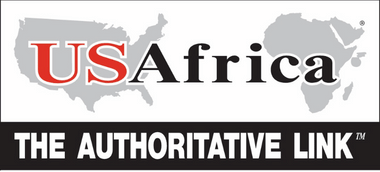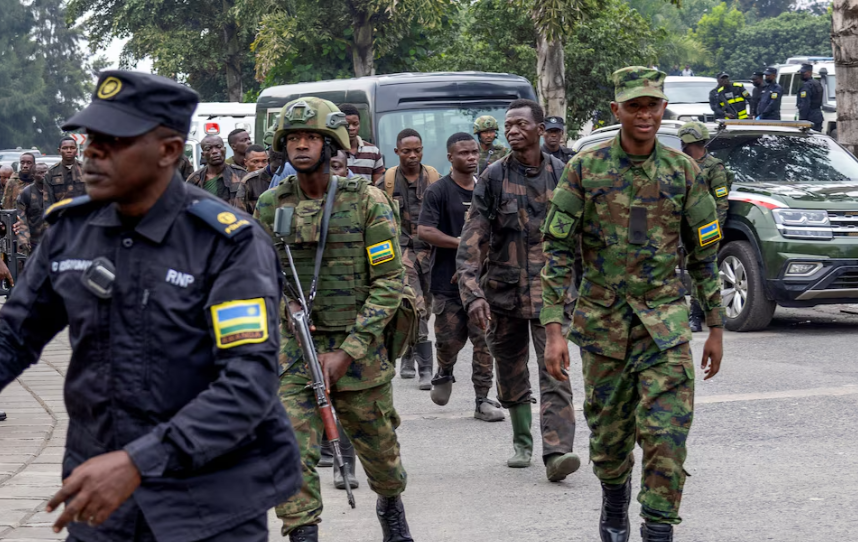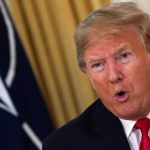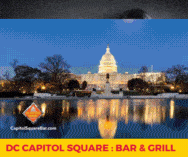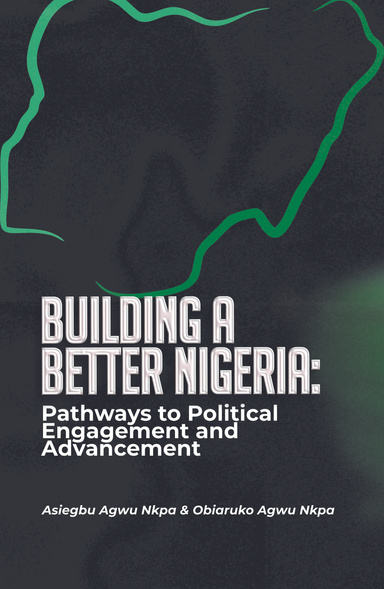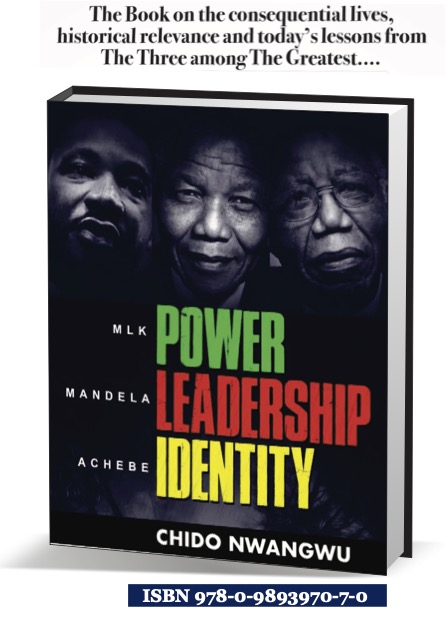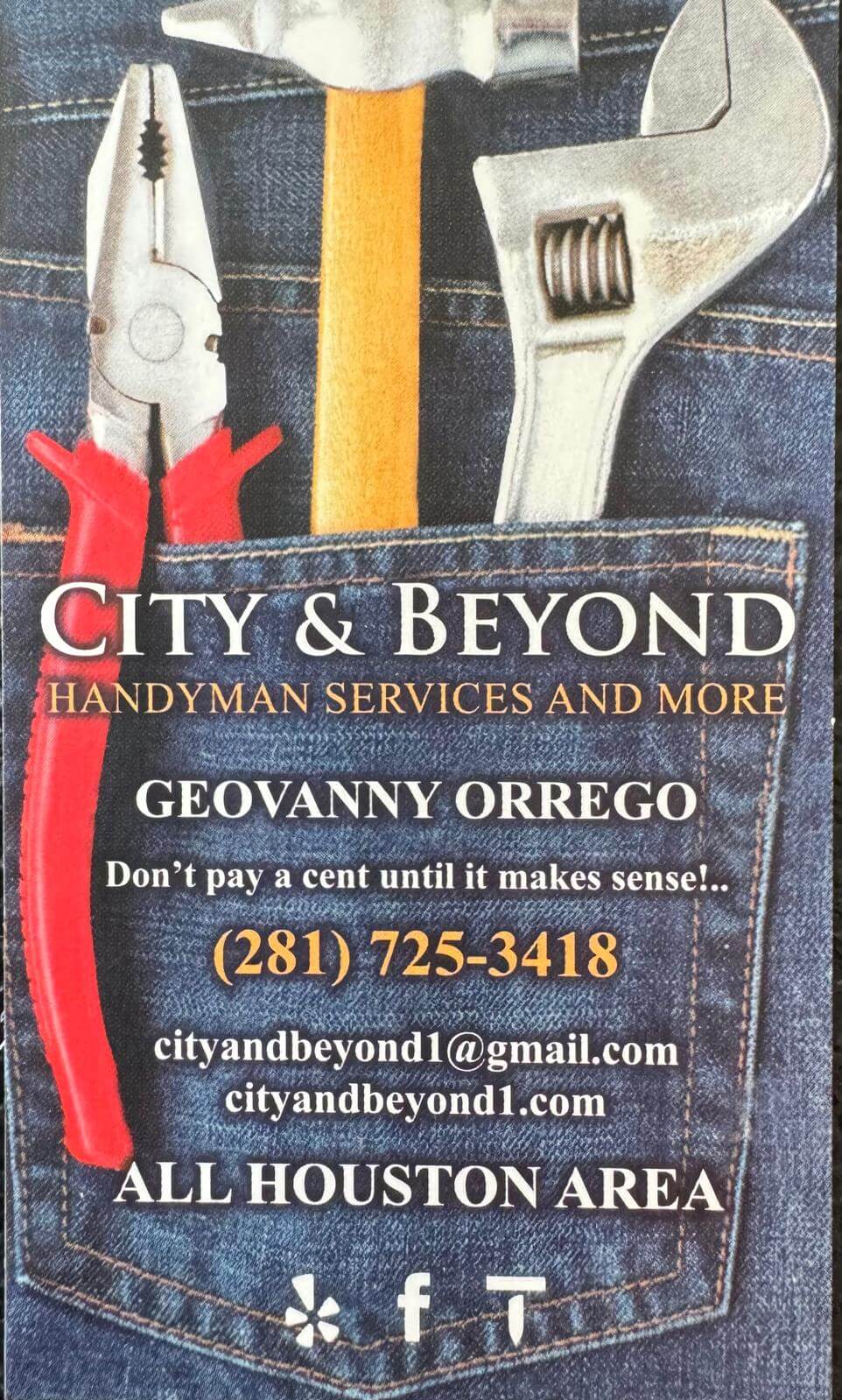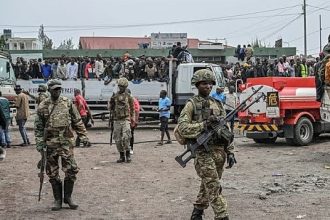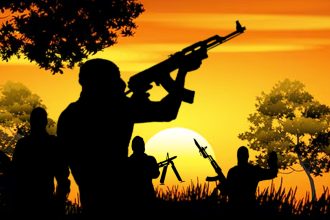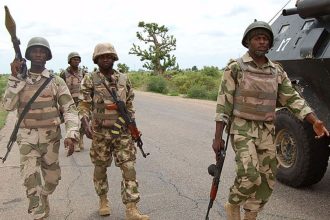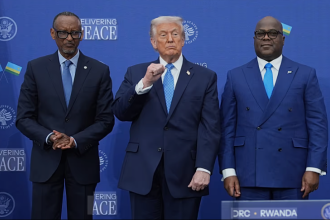The streets of Goma, eastern Congo’s largest city, were littered with bodies, gunfire echoed through neighborhoods, and hospitals were overwhelmed as M23 rebels, backed by Rwanda, clashed with Congolese troops and pro-government militias on Tuesday.
The day after M23 forces marched into the lakeside city, protests erupted in the capital, Kinshasa, targeting embassies, including those of Rwanda, France, and the United States. Demonstrators expressed anger over what they described as foreign interference in the country’s affairs.
M23’s entry into Goma on Monday marked the worst escalation of a conflict rooted in the aftermath of the Rwandan genocide and the struggle for control over Congo’s vast mineral wealth. The renewed violence has displaced thousands, many of whom had sought refuge in Goma after fleeing earlier M23 offensives.
Rwandan Involvement and Local Resistance
The Congolese government and U.N. peacekeeping authorities accused Rwanda of deploying troops to Goma to support M23 rebels, allegations Rwanda denied, claiming self-defense against Congolese militias. Residents and U.N. sources reported dozens of Congolese troops surrendering, although pockets of resistance continued, particularly near the city’s airport.
“I have heard the crackle of gunfire from midnight until now… it is coming from near the airport,” said an elderly woman from Goma’s northern Majengo neighborhood.
Reports of Atrocities
Jens Laerke, spokesperson for the U.N. Office for the Coordination of Humanitarian Affairs (OCHA), said reports indicated “heavy small arms fire and mortar fire across the city and the presence of many dead bodies in the streets.” He added, “We have reports of rapes committed by fighters, looting of property… and humanitarian health facilities being hit.”
Hospitals are reportedly overwhelmed, treating wounded civilians in hallways, while international aid workers described the city as a “powderkeg.” Explosives have hit residential areas, including a Catholic hospital’s maternity ward, according to Bishop Willy Ngumbi. “The youth are armed, and the fighting is now taking place in the town,” he said.
The situation has raised grave public health concerns. François Moreillon, head of the International Committee of the Red Cross in Congo, warned that a looted medical warehouse and potential damage to a laboratory storing pathogens like Ebola could lead to a regional health crisis. “If the structure is compromised, it could allow dangerous germs to escape,” he cautioned.
Protests and International Outcry
In Kinshasa, thousands protested against perceived foreign complicity in the conflict. Demonstrators burned tires, chanted anti-Rwanda slogans, and attacked embassies of countries, including the United States, France, and Belgium. Videos verified by Reuters showed looters ransacking the Kenyan embassy and a supermarket.
“What Rwanda is doing is with the complicity of France, the U.S., and Belgium. The Congolese people are fed up. How many times do we have to die?” said protester Joseph Ngoy.
Regional Implications and Historical Context
The ongoing violence has sparked fears of a broader regional war reminiscent of the 1996-1997 and 1998-2003 conflicts that claimed millions of lives, mainly due to hunger and disease. M23, an ethnic Tutsi-led insurgency backed by Rwanda, is the latest in a series of rebellions tied to the fallout of the Rwandan genocide nearly three decades ago.
Rwanda has long argued that Hutu-led militias in Congo pose a threat to its national security and to Congolese Tutsis. However, Congo accuses Rwanda of using proxy militias to exploit its mineral resources, including coltan, a key component in smartphone production.
As the conflict intensifies, the international community remains deeply concerned about its humanitarian and geopolitical consequences, calling for urgent measures to prevent further escalation.
(Reuters)
